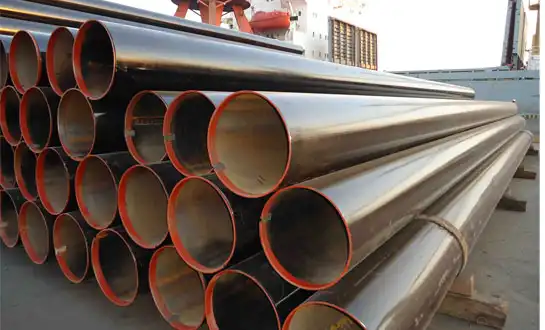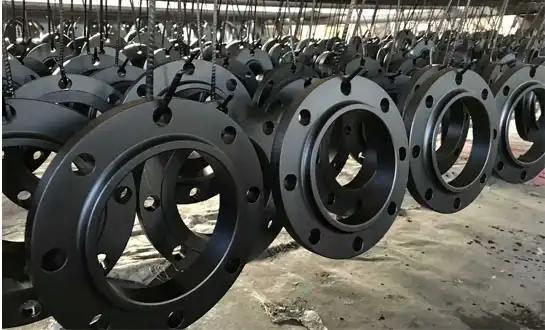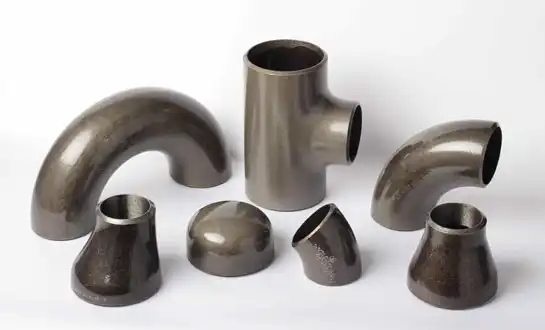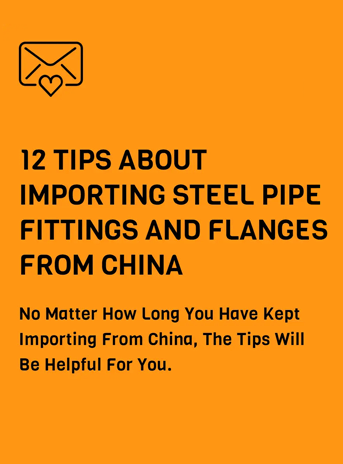Informed material selection that strikes a balance between performance demands, safety concerns, and financial limits is made possible by understanding the fundamental distinctions between seamless pipes and welded pipes. Wedged pipes offer economical options for less demanding services, whereas seamless pipes manufacturer offer greater pressure ratings, consistent structural qualities, and increased reliability for important applications.
What Makes Seamless Pipes Different from Welded Pipes?
The primary differences between welded and seamless pipes are found in their production procedures and the ensuing structural features, which have a big influence on how well they function in demanding applications. In order to create a continuous structure free of longitudinal seams and weld joints, seamless pipes are made from solid steel billets using techniques like hot rolling or cold drawing. This production process creates pipes with higher strength characteristics, uniform wall thickness across the circumference, and homogenous grain structure—all of which make them perfect for high-pressure, high-temperature settings. On the other hand, welded pipes are made by rolling coils or flat steel plates into cylindrical shapes, then joining the edges using different welding techniques to produce a visible seam along the length of the pipe. In industries such as oil and gas, power generation, chemical processing, and construction, engineers and procurement specialists can choose the right pipe types based on project requirements, operating conditions, and financial constraints by being aware of these manufacturing differences.
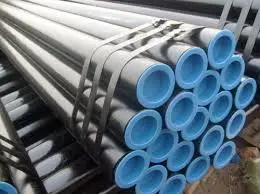
Manufacturing Process Distinctions and Structural Integrity
Production Methods for Seamless Pipe Manufacturing
The production of seamless pipes involves sophisticated manufacturing techniques that begin with solid cylindrical steel billets heated to extremely high temperatures exceeding 1200 degrees Celsius. The most common method, known as the Mannesmann process, utilizes rotary piercing where the heated billet is forced over a piercing rod while rotating between conical rollers, creating a hollow shell without any welding operations. This seamless manufacturing approach ensures that the pipe maintains uniform metallurgical properties throughout its entire cross-section, eliminating potential weak points that could develop at welded seams. Following the initial piercing operation, seamless pipes undergo further processing through plug rolling, mandrel rolling, or pilger rolling to achieve precise dimensional specifications and desired wall thickness. The hot-rolled seamless pipes may subsequently receive cold drawing processes to improve surface finish and enhance dimensional accuracy. The absence of longitudinal welds in seamless pipes provides inherent advantages in pressure-bearing capacity, as the material properties remain consistent around the entire circumference without heat-affected zones that characterize welded constructions. Quality control during seamless pipe manufacturing includes ultrasonic testing, eddy current inspection, and hydrostatic pressure testing to verify structural integrity before pipes leave the production facility.
Welded Pipe Fabrication Techniques and Joint Characteristics
Welded pipes are manufactured through fundamentally different processes that begin with flat steel plates or coiled strips formed into cylindrical shapes using various bending and forming equipment. The longitudinal edges of the formed pipe body are then joined through electric resistance welding (ERW), submerged arc welding (SAW), or electric fusion welding (EFW) techniques, each producing distinct weld characteristics and mechanical properties. ERW pipes utilize high-frequency electrical resistance to generate heat at the joint interface, causing the steel edges to fuse together under pressure without requiring filler material. The welded seam introduces a heat-affected zone where the steel microstructure differs from the base material due to thermal cycling during the welding process, potentially creating localized variations in hardness and ductility. Modern welding technologies and post-weld heat treatment procedures minimize these variations, enabling welded pipes to meet stringent specifications for many demanding applications. Unlike seamless pipes, welded constructions require additional quality verification focused specifically on weld integrity, including radiographic examination and ultrasonic inspection of the seam area.
Metallurgical Properties and Grain Structure Differences
The metallurgical characteristics distinguishing seamless pipes from welded alternatives stem directly from their contrasting thermal histories and manufacturing processes. Seamless pipes exhibit uniform grain structure throughout their cross-section since the entire pipe body experiences similar heating, deformation, and cooling cycles during production, resulting in consistent mechanical properties regardless of orientation or location around the circumference. This uniformity translates to predictable behavior under stress, pressure, and temperature variations, making seamless pipes particularly valuable for critical service conditions where material performance consistency is paramount. The grain flow in seamless pipes follows the longitudinal direction without interruption, contributing to enhanced strength and toughness characteristics that resist crack propagation. Conversely, welded pipes contain distinct metallurgical zones including the weld metal, heat-affected zone, and unaffected base metal, each exhibiting different grain structures and mechanical properties based on their thermal exposure during welding operations.
Performance Characteristics and Application Suitability
Pressure Rating Capabilities and Strength Advantages
The structural integrity advantages of seamless pipes become most apparent when evaluating pressure-bearing capabilities and strength performance under demanding operating conditions. Seamless pipes can reliably handle higher internal pressures compared to equivalent-size welded pipes because they lack the longitudinal seam that represents a potential failure point. Engineering standards and pressure vessel codes often allow higher design stresses for seamless constructions, recognizing their superior reliability in critical pressure applications. The uniform wall thickness and consistent material properties throughout seamless pipes contribute to predictable stress distribution when subjected to internal pressure, external loads, or thermal expansion forces. Industries operating systems with pressures exceeding 3000 PSI typically prefer seamless pipes for main process lines. The burst strength of seamless pipes generally exceeds that of comparable welded pipes by 10-20 percent depending on manufacturing quality and material specifications. Seamless pipes also demonstrate superior fatigue resistance in applications involving cyclical pressure variations or mechanical vibrations.
Corrosion Resistance and Service Life Considerations
Corrosion behavior represents another critical differentiator between seamless pipes and their welded counterparts, particularly in aggressive chemical environments. Seamless pipes offer uniform corrosion resistance around their entire circumference since the material composition and surface conditions remain consistent without localized chemistry variations or surface irregularities associated with welded seams. The absence of crevices or microstructural discontinuities eliminates preferential corrosion sites that might develop at weld fusion lines in welded pipes. When transporting corrosive media such as acids or caustic solutions, the weld seam in welded pipes may experience accelerated attack due to residual stresses or compositional variations in the weld metal. The extended service life achievable with seamless pipes in corrosive environments often justifies their higher initial cost through reduced maintenance requirements and lower lifecycle costs.
Temperature Performance and Thermal Stability
High-temperature service conditions accentuate the performance differences between seamless pipes and welded alternatives. Seamless pipes maintain consistent mechanical properties at elevated temperatures because their uniform microstructure responds predictably to thermal exposure without localized variations that characterize welded constructions. Applications requiring operation above 400 degrees Celsius typically favor seamless pipes to avoid complications associated with differential thermal expansion between weld metal and base material. The thermal cycling experienced during plant startups and shutdowns subjects pipes to repetitive thermal stresses, with welded seams being particularly vulnerable to thermal fatigue cracking. Seamless pipes distribute thermal stresses uniformly without stress concentrations at weld locations, enhancing durability in cyclical temperature service.
Cost Analysis and Selection Guidelines
Economic Considerations and Price Comparisons
The cost differential between seamless pipes and welded pipes represents a significant factor in material selection decisions, with seamless options typically commanding 20-40 percent price premiums depending on size and specification. This price difference reflects the more complex manufacturing processes and higher energy consumption associated with seamless pipe production. Large-diameter pipes above 16 inches increasingly favor welded construction due to exponential cost increases affecting seamless production. Economic analysis must consider total cost of ownership including installation expenses, maintenance requirements, expected service life, and failure consequences rather than focusing solely on initial material costs. Critical applications where system downtime costs are substantial often justify seamless pipe selection despite higher initial investment.
Application-Specific Selection Criteria
Selecting between seamless pipes and welded alternatives requires systematic evaluation of operating conditions and performance requirements. High-pressure applications above 2000 PSI generally warrant seamless construction to maximize safety margins, particularly when transporting hazardous materials. Low-pressure distribution systems typically utilize welded pipes where their adequate performance meets requirements at favorable costs. Temperature considerations favor seamless pipes for service above 400 degrees Celsius or applications involving frequent thermal cycling. Size limitations influence selection since seamless pipes become prohibitively expensive above certain diameters.
Quality Standards and Specification Requirements
Both seamless pipes and welded pipes must comply with applicable standards including ASTM, API, DIN, and JIS that define dimensional tolerances, mechanical properties, and testing requirements. Seamless pipes typically reference standards such as ASTM A106 or API 5L seamless specifications. Welded pipes follow corresponding standards that include additional requirements for weld seam integrity verification. Third-party inspection services provide independent verification that pipes meet specified requirements regardless of manufacturing method.
Conclusion
HEBEI RAYOUNG PIPELINE: Your Complete Piping Solutions Manufacturer and Supplier
At HEBEI RAYOUNG PIPELINE TECHNOLOGY CO., LTD., we understand that selecting between seamless pipes and welded alternatives represents just one aspect of comprehensive piping system design. We provide diverse industrial pipe fittings, including buttweld carbon steel pipe elbows, tees, reducers, and pipe flanges, which ensure secure connection points throughout your installations. Our product lineup includes solutions for all design requirements ranging from straight lines through complex angles to flexible joints, complementing both seamless and welded pipe systems with precision-engineered fittings. RAYOUNG is known across industries as a dependable carbon steel pipe supplier, consistently serving domestic and global markets with GOST-R and SGS certifications validating our export compliance. Whether your project demands the superior performance of seamless pipes for critical service or the economic advantages of welded construction, our technical team provides expert guidance selecting optimal materials. As leading pipes and fittings manufacturers operating under ISO 9001:2015 quality management systems, we combine innovation with consistency to support your infrastructure success. Ready to discuss your seamless pipes requirements or explore our complete product range? Contact our experienced engineering team today at info@hb-steel.com for technical specifications and competitive quotations.
References
1. American Petroleum Institute. (2023). Specification for Line Pipe: Manufacturing Processes and Quality Requirements for Seamless and Welded Pipe. API Specification 5L, Forty-Sixth Edition, Washington, D.C.
2. Bhadeshia, H.K.D.H., & Honeycombe, R. (2024). Steels: Microstructure and Properties of Steel Pipes. Fourth Edition, Butterworth-Heinemann, Oxford, United Kingdom.
3. Davis, J.R. (Ed.). (2023). Carbon Steel Pipe: Manufacturing, Properties, and Applications. ASM International Handbook Committee, Materials Park, Ohio.
4. Kumar, S., & Sharma, A. (2024). Comparative Study of Mechanical Properties in Seamless versus Welded Carbon Steel Pipes. International Journal of Pressure Vessels and Piping, Vol. 215, pp. 104-125.
5. Mohitpour, M., Golshan, H., & Murray, A. (2023). Pipeline Design and Construction: A Practical Approach to Seamless and Welded Steel Pipe Systems. Third Edition, ASME Press, New York.
6. Zhang, L., & Chen, W. (2024). Manufacturing Technology and Quality Control of Seamless Steel Pipes: Hot Rolling and Cold Drawing Processes. Materials Science Forum, Vol. 1089, pp. 267-289.

Need a quote? Want to see samples? Just say hello. We’re friendly. We’re fast. And we’re ready when you are.
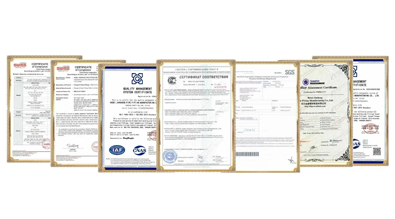
Welcome to RAYOUNG – Strong Pipes, Stronger Promise
